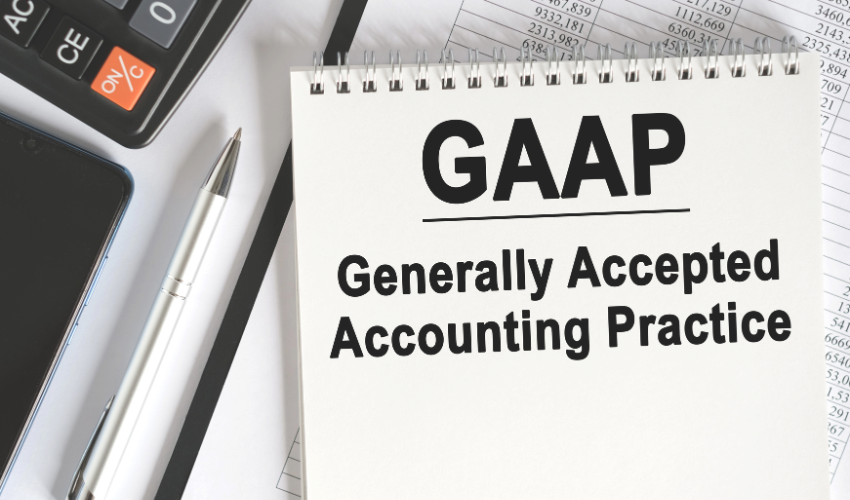What is GAAP (Generally Accepted Accounting Principles)?
In the intricate world of finance, transparency, consistency, and comparability are paramount. At the core of financial reporting lies a set of principles that provide a universal language for businesses, investors, and regulators alike. These principles, collectively known as Generally Accepted Accounting Principles (GAAP), serve as the bedrock of financial reporting standards. In this comprehensive exploration, we will unravel the origins, principles, and significance of GAAP in shaping the financial landscape.
I. Historical Evolution of GAAP:
1. Roots in the United States:
The origins of GAAP can be traced back to the early 20th century when the need for standardized financial reporting became evident. The Securities and Exchange Commission (SEC) was established in 1934, playing a pivotal role in shaping accounting standards in the United States.
2. The Role of the Financial Accounting Standards Board (FASB):
The FASB, established in 1973, is an independent, private-sector body responsible for setting accounting standards in the United States. Its mission is to develop and improve financial accounting and reporting standards, providing consistency and reliability in financial statements.
II. Principles Underlying GAAP:
1. Relevance and Reliability:
Financial information should be relevant to users’ decision-making while maintaining a high level of reliability. This ensures that financial statements are both meaningful and trustworthy.
2. Consistency:
Consistency is a key principle of GAAP, emphasizing the importance of applying accounting rules consistently over time. This allows for accurate comparisons between different periods and companies.
3. Comparability:
GAAP promotes comparability across financial statements, enabling users to assess and compare the financial performance and position of different entities. This is crucial for investors, analysts, and other stakeholders.
4. Prudence:
The principle of prudence encourages a conservative approach to financial reporting. It advises accountants to err on the side of caution, recognizing losses and liabilities sooner rather than later.
III. Hierarchy of GAAP:
1. FASB Statements and Interpretations:
The highest level of the GAAP hierarchy consists of Statements and Interpretations issued by the Financial Accounting Standards Board (FASB). These pronouncements establish generally accepted accounting principles.
2. AICPA Industry Guides:
Industry-specific guidance issued by the American Institute of Certified Public Accountants (AICPA) provides additional insights and rules for particular sectors.
3. FASB Technical Bulletins:
FASB Technical Bulletins address specific implementation issues and provide guidance on applying existing standards in particular situations.
IV. Key Components of GAAP:
1. Balance Sheet Principles:
GAAP provides guidelines for presenting assets, liabilities, and equity on the balance sheet. This includes the valuation of assets, recognition of liabilities, and disclosure requirements.
2. Income Statement Principles:
Principles governing the recognition and presentation of revenues, expenses, gains, and losses contribute to the accuracy and consistency of income statements.
3. Cash Flow Statement Principles:
Guidelines for preparing the statement of cash flows ensure a clear representation of a company’s cash inflows and outflows from operating, investing, and financing activities.
V. GAAP vs. IFRS:
1. Global Variations:
While GAAP is primarily followed in the United States, International Financial Reporting Standards (IFRS) is a globally recognized set of accounting standards used in many countries. The key difference lies in their origin, with GAAP being U.S.-centric and IFRS developed by the International Accounting Standards Board (IASB).
2. Convergence Efforts:
Over the years, there have been efforts to converge GAAP and IFRS to create a single set of high-quality global accounting standards. Despite progress, differences persist, and full convergence remains a complex and ongoing process.
VI. Challenges and Criticisms:
1. Complexity and Compliance Costs:
Critics argue that GAAP can be overly complex, leading to high compliance costs for businesses. The intricate nature of some accounting standards may pose challenges, especially for smaller entities.
2. Subjectivity in Standards:
The application of certain GAAP standards involves a degree of subjectivity, potentially leading to variations in interpretation and application.
3. Adaptability to Evolving Business Models:
Some critics contend that GAAP may struggle to keep pace with rapidly evolving business models, particularly in the technology and service sectors.
VII. Conclusion:
In conclusion, Generally Accepted Accounting Principles (GAAP) stand as a cornerstone in the realm of financial reporting, providing a standardized framework for businesses to communicate their financial health to the world. Rooted in historical evolution and guided by principles of relevance, reliability, and comparability, GAAP plays a pivotal role in shaping the global financial landscape. As businesses and economies continue to evolve, the ongoing commitment to refining and adapting GAAP ensures its continued relevance and effectiveness in providing a common language for financial reporting. For investors, regulators, and financial professionals, a deep understanding of GAAP is not just an academic exercise but an essential skill in navigating the complex terrain of modern finance.



